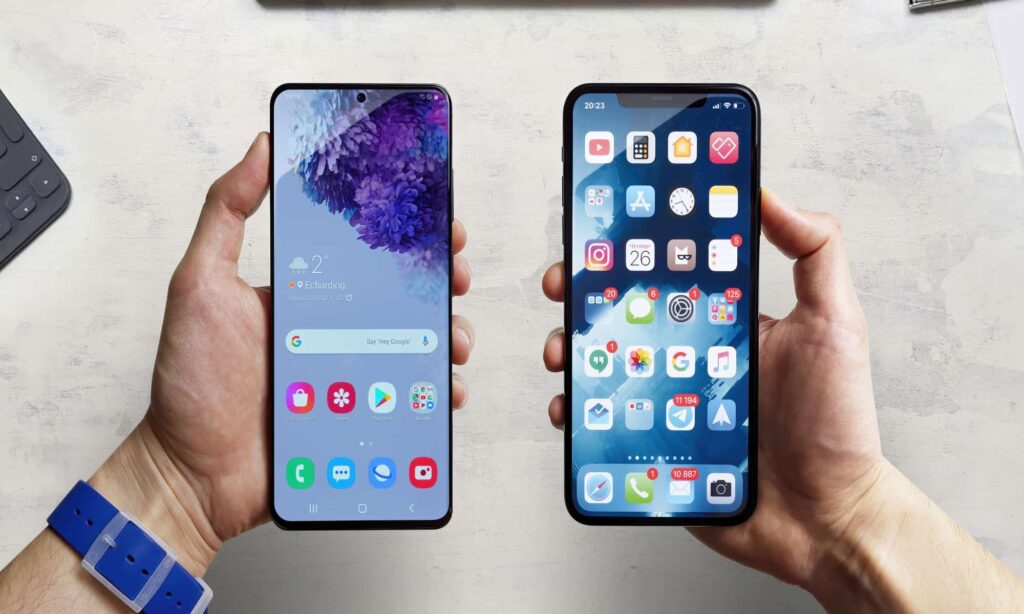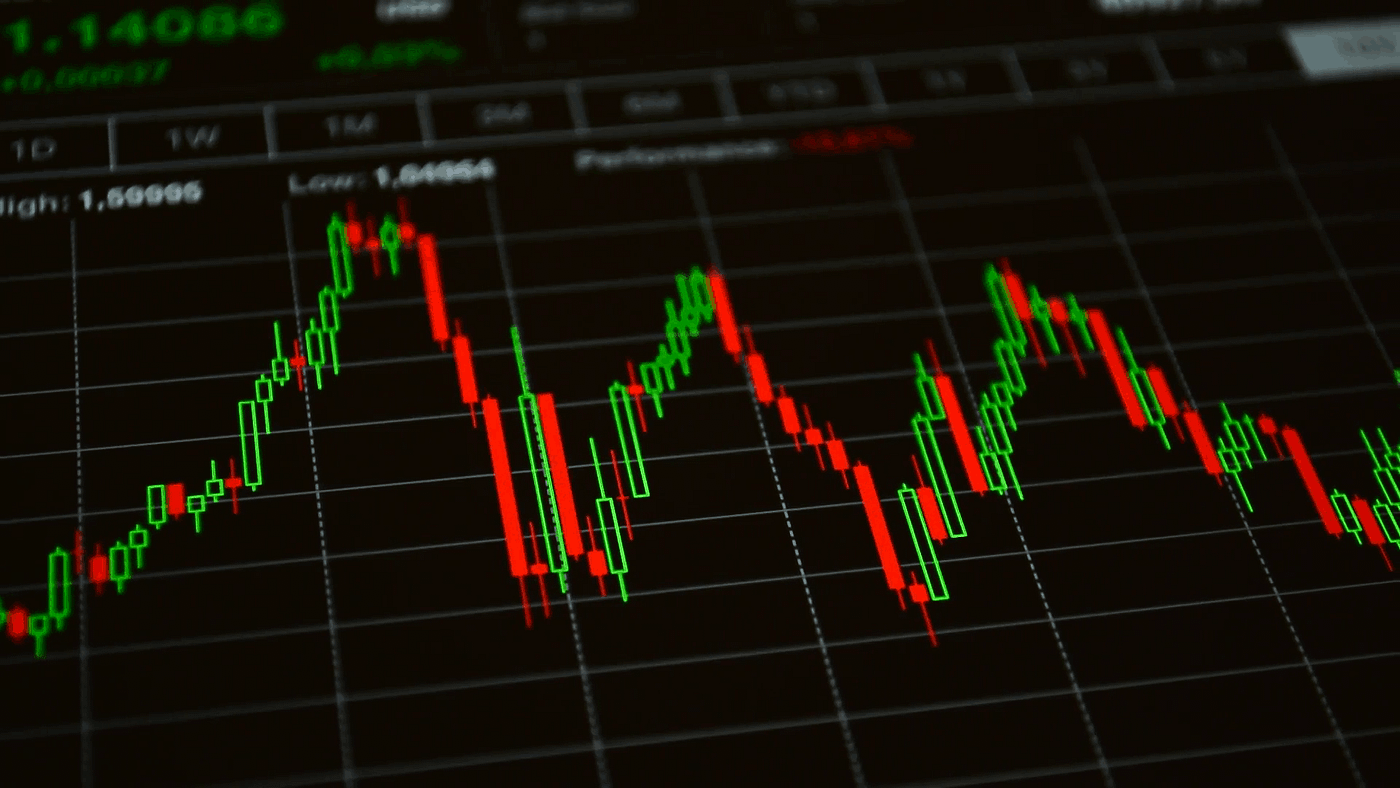
Apple vs Samsung: The ultimate head-to-head
Apple’s iPhone and Samsung’s Galaxy lineup are juggernauts in the smartphone industry. Apple is clearly reigning supreme in the US, having claimed 52% of the local smartphone market in the first quarter of 2023, compared to Samsung, which took second place with 27%. But quantity doesn’t always mean quality, naturally, and this guide will compare the two companies along every measure, from performance and design to ecosystem and security. Ready for the ultimate showdown? Here’s how Apple’s iPhones stack up against Samsung’s Galaxy series.
Table of Contents
iPhone vs Samsung: Product lineup
Samsung has a lot more phones on offer than Apple.

Samsung offers multiple phone lineups. The Galaxy A and M series are affordable options with respectable specs for those who just want the basics. Galaxy S models represent Samsung’s flagships, with some of the fastest chips and snappiest cameras on the market. The newer Galaxy Z series is foldable, and still quite expensive as a result.
Apple’s iPhone lineup is comparatively small. It’s currently led by four variants of the iPhone 15, and only two of them — the 15 Pro and 15 Pro Max — sport the company’s best technology, with high pricetags to match. “Budget” options are limited to older models the company keeps around, including the iPhone 14, iPhone 13, and iPhone SE. The SE should get a refresh within the next year.
We’ve broken down Apple and Samsung’s lineups into three categories: entry-level, mid-range, and high-end. Of course, there are always great phone deals that can upend things, but we’ll be going by standard retail prices to keep things fair.
iPhone vs Samsung: Hardware and tech
Depending on what you look for in a phone, this section can be the real meat and potatoes in deciding what’s best for you. Here are some quick comparisons of Apple and Samsung phones’ important tech.
Chips
Samsung has tended to use Qualcomm’s Snapdragon chipsets for its phones sold in the United States, India, South Korea, and a few other countries, while using first-party Exynos chips for the rest of the world. But with Galaxy S23 phones, you’ll only find the Snapdragon 8 Gen 2 chipset.
The A16 Bionic chip found in the iPhone 15 appears to beat out the Snapdragon 8 Gen 2 in terms of CPU performance. The A17 Pro in the iPhone 15 Pro and Pro Max is even better, although phones like the S23 Ultra lead in GPU scores.
The takeaway is that iPhone tends to offer better CPU performance, whereas Samsung tends to provide better GPU performance. So if you’re going to be playing lots of 3D games, go with Samsung. If you want to switch between a wide range of applications quickly, an iPhone may be better — although the overall speed between high-end devices is negligible. If you don’t really care about either of those factors and just want something cheap, Samsung has plenty of budget options that Apple doesn’t.
Cameras
Camera tech is increasingly more important than processors to the average person, since it’s only really pros and hobbyists who use standalone cameras going into 2024. The majority of Samsung phones have very versatile camera setups, with budget options having at least three rear cameras, including a primary (wide), macro, and an ultra-wide. Telephotos are entering Samsung’s budget space. With iPhones, you’re stuck with a wide and an ultra-wide unless you’re willing to spring big for a Pro model.
In terms of sheer power, there is one clear winner in the camera department: Samsung’s Galaxy S23 Ultra. Its megapixel might on both the front and back, combined with in-depth control, was enough for us to declare it the best phone camera available. It has a quad-camera system including a stellar 200MP shooter, joined by a 10MP periscope camera, a 10MP telephoto lens, and a 12MP ultra-wide lens.
That being the case, Apple’s latest high-end model, the iPhone 15 Pro Max, is an admirable runner-up. You’re getting a 48MP main camera, a 12MP ultra-wide, and a 5x telephoto, combined with Apple’s usual sensor and processing wizardry that lets the company punch above paper specs. Indeed most true professionals would probably rather shoot video on a Pro Max to take advantage of things like ProRes files, log recording, and support for the Academy Color Encoding System, even if they might need custom lenses.
Display
As for the screen you’ll be looking at, both Apple and Samsung’s flagships have sharp HDR displays with similar peak brightness values, though Apple wins by the nits on the iPhone 15 lineup. If you’re looking at budget models, Samsung tends to win. Even cheaper Galaxy A-series phones have decently-sized AMOLED panels, whereas Apple’s iPhone SE is frozen in time with a 4.7-inch LCD that can never go completely black.
Samsung relies on Gorilla Glass protection for most of its phones, the strength of which usually goes up with the pricetag of the device, the strongest material being Victus. Apple has used Ceramic Shield for its phones since the iPhone 12 series, a new type of glass developed by Corning, the same firm behind Gorilla Glass. Every non-SE iPhone gets the same Ceramic Shield protection regardless of cost, which is generally a good thing even if you should still buy a case to prevent cracks.
Perhaps the biggest difference between the two companies regarding screen specs is Samsung’s commitment to faster refresh rates. As mentioned, the iPhone 15 and 15 Plus still have 60Hz panels, whereas there are less expensive Galaxy phones hitting 120Hz. If you want ultra-smooth motion on an iPhone, you have to pay for a Pro. Ditto if you want always-on display tech, which is extremely common in the Android world.
Battery
Samsung batteries tend to run longer than iPhones based on our testing, sometimes well over a day, and that’s what you’d expect based on specs. Multiple Samsung devices have 5,000mAh battery packs, whereas even the iPhone 15 Pro Max tops out at 4,441. Apple does its best to optimize power usage, but there’s only so far that can go. Neither company is putting out something that can last more than two days, despite longer life being a frequent public demand.
Samsung often triumphs when it comes to charging speeds, at least on high-end models. The S23 Ultra supports 45W wired charging, whereas the iPhone 15 Pro Max can’t do any better than 27W. Even the standard S23 manages 25W versus the iPhone 15’s 20W (or less).
S23 models also offer faster 15W Qi charging, twice what iPhones are usually capable of. Apple users can hit those speeds when using MagSafe, however, and the iPhone 15 lineup is poised to get Qi2, which is actually based on Apple’s technology.
Reverse wireless charging is present on a number of Samsung phones, whereas iPhone 15s can only perform reverse wired charging. In both cases the tech is limited to 4.5W, so don’t expect to top up your AirPods or Galaxy Watch in a hurry.
iPhone vs Samsung: Software and ecosystem
Here at Android Authority, we can’t help but be a little biased toward Google’s operating system. Android is an open platform offering more choice, versatility, and customization, to name a few benefits. Samsung’s One UI does add a lot of bloatware on top of stock Android however, making it easy to get lost in all the icons, endless settings, and pre-installed apps you likely won’t ever use. On the flip side, it does enable even more customizability with exclusive apps such as GoodLock.
There are a few things that even we admit iOS does better. For starters, iOS tends to be a simpler and smoother experience. This is partly due to Apple’s highly-optimized hardware, but the user interface itself is an example of the saying “less is more.” There are no app drawers to hide things, and controls are frequently more intuitive.
Samsung tends to offer four OS updates and five years of security updates, while Apple averages six OS updates.
Regarding software support, Samsung offers up to four OS updates and five years of security updates for its flagships, including the Galaxy S series, Z series, and select A-series devices. Past devices, such as the Galaxy S20 and Note series, have received three years of OS updates and four years of security updates.
The gold standard is still Apple, which offers up to six OS updates on average. iPhone owners can also download these as soon as they launch, whereas Samsung has to get an Android update from Google, optimize it for specific products, and only then seed it. The process can take months.
Because iOS is Apple’s proprietary software, the company gets more control over the end-user experience. That translates to better memory management, software integration, and user security. The downside is that this puts users within Apple’s walled garden, unlike Android, which is open-source. You can only ever get iPhone apps from the Apple App Store unless you’re a hacker or developer, and some features are reserved for Apple apps, accessories, and services — even Garmin‘s most expensive fitness watches can’t be used to reply to iPhone messages the way an Apple Watch can.
Because iOS is Apple’s proprietary software, the company gets more control over the end-user experience. That translates to better memory management, software integration, and user security. The downside is that this puts users within Apple’s walled garden, unlike Android, which is open-source. You can only ever get iPhone apps from the Apple App Store unless you’re a hacker or developer, and some features are reserved for Apple apps, accessories, and services — even Garmin‘s most expensive fitness watches can’t be used to reply to iPhone messages the way an Apple Watch can.
Because iOS is Apple’s proprietary software, the company gets more control over the end-user experience. That translates to better memory management, software integration, and user security. The downside is that this puts users within Apple’s walled garden, unlike Android, which is open-source. You can only ever get iPhone apps from the Apple App Store unless you’re a hacker or developer, and some features are reserved for Apple apps, accessories, and services — even Garmin‘s most expensive fitness watches can’t be used to reply to iPhone messages the way an Apple Watch can.
Because iOS is Apple’s proprietary software, the company gets more control over the end-user experience. That translates to better memory management, software integration, and user security. The downside is that this puts users within Apple’s walled garden, unlike Android, which is open-source. You can only ever get iPhone apps from the Apple App Store unless you’re a hacker or developer, and some features are reserved for Apple apps, accessories, and services — even Garmin‘s most expensive fitness watches can’t be used to reply to iPhone messages the way an Apple Watch can.
Because iOS is Apple’s proprietary software, the company gets more control over the end-user experience. That translates to better memory management, software integration, and user security. The downside is that this puts users within Apple’s walled garden, unlike Android, which is open-source. You can only ever get iPhone apps from the Apple App Store unless you’re a hacker or developer, and some features are reserved for Apple apps, accessories, and services — even Garmin‘s most expensive fitness watches can’t be used to reply to iPhone messages the way an Apple Watch can.
iPhone vs Samsung: Value for money
Ultimately, the value you get from a phone depends on what you’re looking for and how you want to use it. While Samsung sometimes has better raw specs, most shoppers should be plenty satisfied with either an iPhone 15 or S23, and even the companies’ cheaper models should function well in daily life. Anyone getting an iPhone 14 or S23 FE as their first smartphone will probably be delighted.
iPhone vs Samsung: Data security and privacy
Thanks to Google’s security updates becoming more consistent, this topic isn’t as one-sided as it once was. Google has continued to secure the Google Play Store and add measures to ensure the information on your phone stays safe. These include sandboxing, two-step verification, Google Play Protect, further controlled app permissions, and more. These upgrades, along with more educated users, make for robust Android security that begins to rival iOS.
Whether iOS is better than Android in security is now up for debate, but the consensus still gives Apple the upper hand. iOS has more consistent updates for all devices, a closed ecosystem that’s harder to penetrate, and a stricter app store. These factors combined make it harder for attackers to target iOS users.


